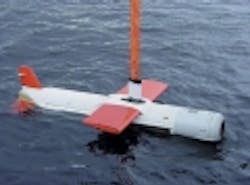DARPA eyes space-based Internet for persistent battlefield data communications, surveillance, and satellite control
ARLINGTON, Va., 15 Aug. 2010.Satellite communications experts at the U.S. Defense Advanced Research Projects Agency (DARPA) in Arlington, Va., are taking the next step in developing broadband data communications links to orbiting satellite constellations, not only to establish persistent SATCOM capability for fighting forces in the field, but also to enable real-time control of satellites from military theaters of operation.
The ability to control clusters of satellites from military theaters of operation like Iraq and Afghanistan not only could help establish predictable, round-the-clock satellite communications links for forward-deployed warfighters, but also has the potential to help establish controllable, persistent surveillance capability for the military commanders in the field who need it most.
DARPA awarded an $18 million research contract Friday to Inmarsat plc in London for the Persistent Broadband Ground Connectivity for Spacecraft in Low Earth Orbit program, which seeks to enable near-24/7, very-low-latency, on-demand broadband connectivity between ground satellite terminals and spacecraft in low earth orbit (LEO).
This capability could help establish a persistent communications system for LEO satellites for time-sensitive spacecraft control for defense maneuvers, rapid transmission of critical mission data such as space weather events, direct-from-theater control of spacecraft, and direct-to-theater data delivery with a small ground-based transceiver.
Researchers from DARPA and Inmarsat will use the Broadband Global Area Network (BGAN) service from Inmarsat's I-4 satellite communications constellation to help develop and demonstrate technology for this program. The BGAN service is the fastest mobile data link available that uses a portable terminal and offers on-demand connectivity with global coverage that could extend to LEO orbital altitudes, DARPA officials say.
The BGAN network, which serves land-based, shipboard, and aircraft satellite communications, provides 492-kilobit-per-second full-duplex, full-channel bandwidth over about 600 spot beams with 588 channels per beam.
A space-based BGAN terminal for LEO use appears to be technically feasible by making modest adaptations to the airborne terminal involving Doppler compensation, radiation hardened components, and software changes for rapid beam-to-beam handover without loss of service, DARPA officials say.
For the Persistent Broadband Ground Connectivity for Spacecraft in Low Earth Orbit program, Inmarsat engineers will design a space-based BGAN terminal, modify the BGAN, perform hardware-in-the-loop tests of a space-based BGAN terminal, and integrate the space-based BGAN terminal with the System F6 fractionated spacecraft demonstration cluster.
For more information contact DARPA online at www.darpa.mil or Inmarsat at www.inmarsat.com.
